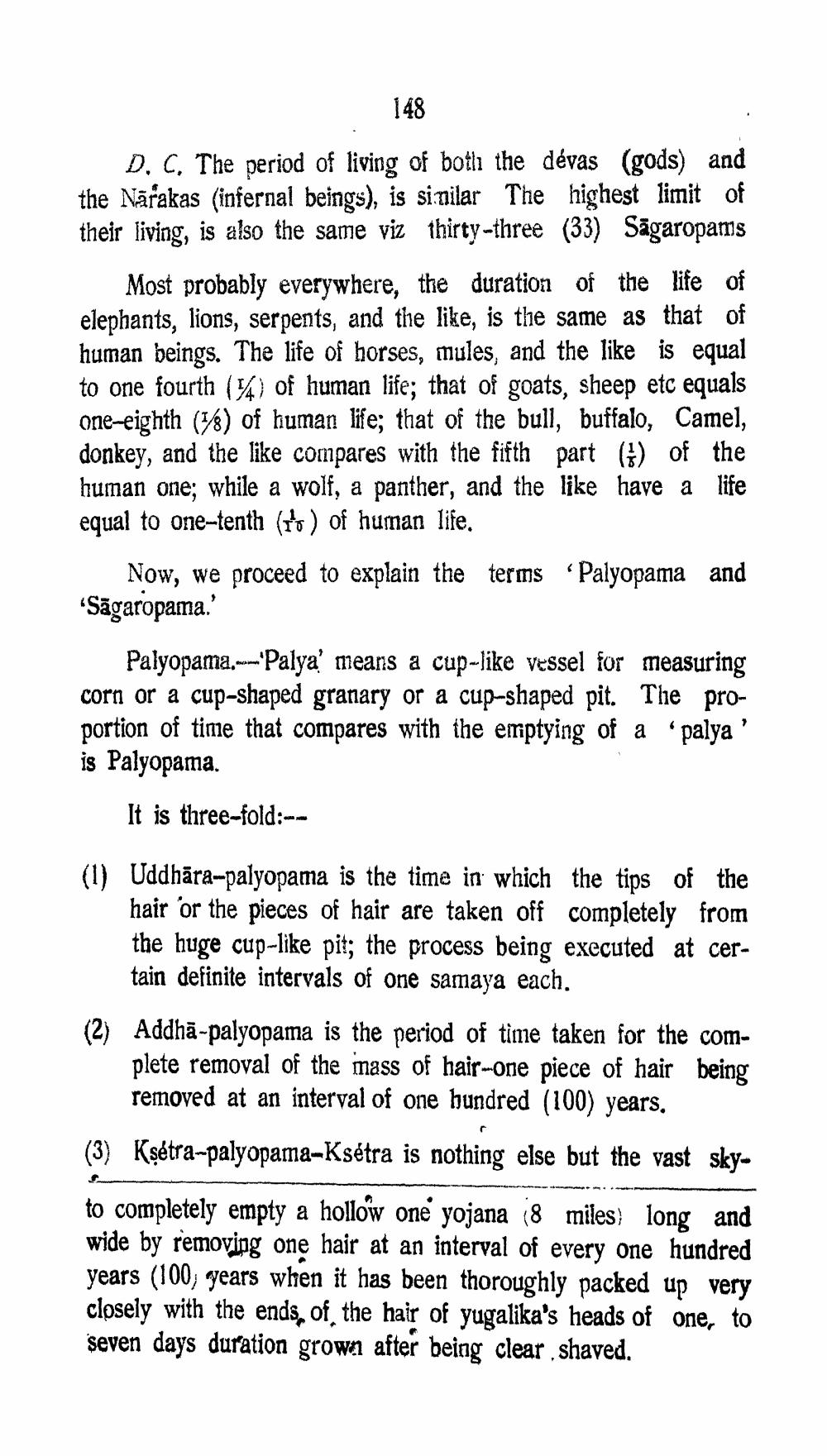________________
148
D. C. The period of living of both the dévas (gods) and the Nārakas (infernal beings), is si-nilar The highest limit of their living, is also the same viz thirty-three (33) Sāgaropams
Most probably everywhere, the duration of the life of elephants, lions, serpents, and the like, is the same as that of human beings. The life of horses, mules, and the like is equal to one fourth (14) of human life; that of goats, sheep etc equals one-eighth (18) of human life; that of the bull, buffalo, Camel, donkey, and the like compares with the fifth part (1) of the human one; while a wolf, a panther, and the like have a life equal to one-tenth (is) of human life.
Now, we proceed to explain the terms "Palyopama and "Sägaropama.'
Palyopama.--"Palya' means a cup-like vessel for measuring corn or a cup-shaped granary or a cup-shaped pit. The proportion of time that compares with the emptying of a palya' is Palyopama.
It is three-fold:--
(1) Uddhāra-palyopama is the time in which the tips of the
hair or the pieces of hair are taken off completely from the huge cup-like pit; the process being executed at certain definite intervals of one samaya each.
(2) Addha-palyopama is the period of time taken for the com
plete removal of the mass of hair-one piece of hair being removed at an interval of one hundred (100) years.
(3) Kşetra-palyopama-Ksétra is nothing else but the vast sky
to completely empty a hollow one yojana 8 miles) long and wide by removing one hair at an interval of every one hundred years (100) gears when it has been thoroughly packed up very closely with the ends, of the hair of yugalika's heads of one, to seven days duration grown after being clear , shaved.




